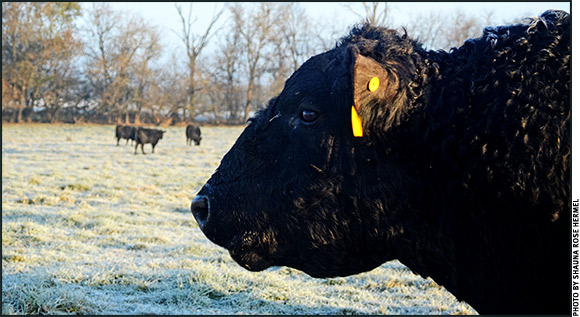
Five Tips for Bull Selection
As you select your next herd sire, here are five considerations to keep in mind.
Sale season is just around the corner, and for bull buyers, it can be a stressful couple of months. Looking at sale books, walking through pens and sitting ringside is time-consuming. Planning ahead can ease the stress and help make the selection process a little easier. Following are five steps that will help bull buyers pick their next herd sire.
1. Establish your needs
One of the greatest challenges bull buyers face is deciding what they need in a bull. Identifying a desired market will help. Some bulls excel in carcass traits and yearling weight. Others sire great replacement heifers, and there’s always bulls advertised for their calving ease and low birth weight. Knowing their desired market helps producers focus on bulls that excel in the right areas.
2. Have a budget
Part of the selection process includes finding a bull that’s affordable. The standard rule of thumb on how much to spend on a bull is twice the price of a fat steer. Yet there are always high-dollar lots that go above this price point. Some producers have markets that offer a premium on cattle sold.
“If you can make a 10¢ premium on calves, selling 100 head at 500 pounds with a 10¢ premium is an extra $5,000,” said Travis Meteer, University of Illinois beef specialist.
Even if producers don’t have special markets, a bull that excels in traits that benefit their operation is valuable.
“If you find a bull that has the traits you’re looking for — buy him. Buy a bull that adds value to your calves and your cow herd,” Meteer said.
3. Look at phenotypes
Producers should make sure the bull has the conformation traits necessary to do the job. “First and foremost, a bull needs to function,” he said. Producers should pay attention to hoof health and shape, testicle size and leg movement. This will show if the bull is able to cover ground and breed the number of cows expected. Meteer said most seedstock producers screen bulls for these traits before selling, but it’s important to take note of any potential issues and compare bulls.
4. Compare the numbers
Producers have several genetic and scientific tools to help with bull selection. The most common data measurement buyers use are expected progeny differences (EPDs). These numbers predict how a bull’s offspring will perform compared to his counterparts.
Using a dollar value index ($Value) helps compare bulls in a particular scenario. They measure the economic impact of traits and help producers compare several traits together. The two most common indexes in the Angus breed are weaned calf value ($W) and beef value ($B).
For commercial cattlemen, sometimes it’s easier to note how a bull ranks in each EPD versus studying the number itself. A bull in the top 25% or higher of his breed often excels in the respective trait. While it depends on the producer’s goals and environment, a bull with this ranking may be one to consider.
5. Find a reputable source
Do research on the operation selling the bull. It’s important for buyers to be comfortable with the seller and trust they’re getting a good bull. Meteer said producers should know about herd health programs and nutrition. The latter is important as it dictates how bulls will respond to vaccinations and continued development.
“I suggest producers require a breeding soundness exam (sometimes referred to as a BSE),” Meteer said. Most bull suppliers do it as a routine, but it’s always important to make sure.
For an expanded version of this story, watch for the January 2017 issue of the Angus Beef Bulletin.

Editor’s Note: Austin Black is a freelance writer from Nevada, Mo.






